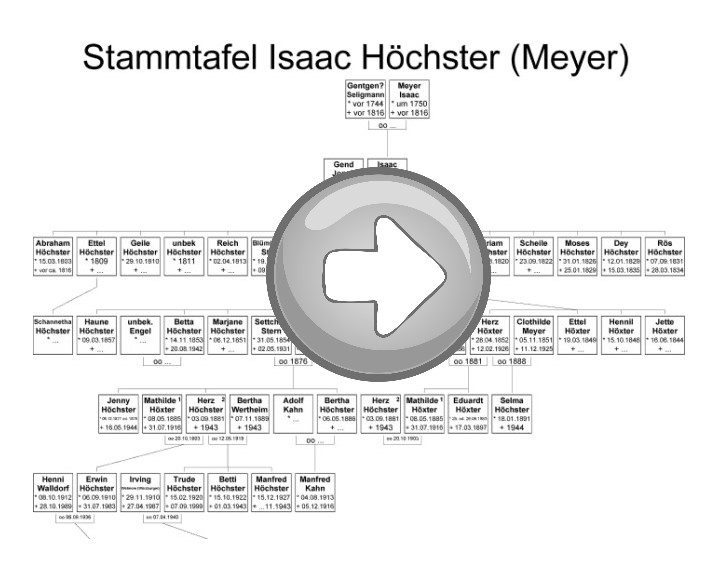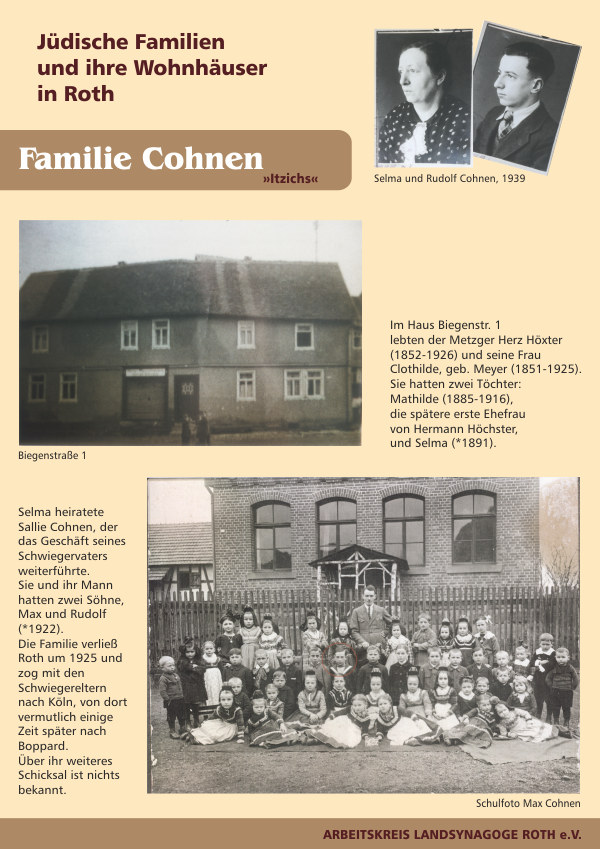Family History Hoechster
Isaac Höchster (*around 1778) and the husband of his sister Reitz, Seligmann Bergenstein, benefited from civil equality during the Kingdom of Westphalia when they settled here. It is said of Isaac that his father Meyer was only granted a certificate of toleration and that he, “the son[,] was reciprocated during the Westphalian constitution”. His wife Gend Jonas (*around 1783) came from Rabenau or Kesselbach. He already had four children with her in 1817, the eldest eight years old, so his marriage probably took place in 1808 or 1809. They had a total of seven children, although the three youngest died in infancy.
In the second generation, two sons remained in the village. Meyer Höchster married Blümchen Stern in 1842, Herz Höchster married her sister Giedel in 1843, both daughters of Herz Stern. This meant that four of Herz's children remained in the village. In this way, the “newcomer” Herz Stern forged family ties with the families already related to each other through the female lines and, as we shall see, he chose the richest family for his daughters. Giedel and Herz Höchster had a son, Herz, and three daughters in a marriage that lasted just nine years; Meier and Blümchen had six children. Only one son of each generation inherited the estate, i.e. the family did not branch out any further in Roth.
The widow Giedel Höchster married a second time, in 1855 to Baruch Nathan from Lohra. She had three children with him, two sons and a daughter. Thus she founded another Jewish family in Roth. The younger son Abraham married and settled in Roth.
In the third generation, Herz was first married to Thekla Bär from Griedel, with whom he had the children Eduard and Mathilde, and later to Clothilde Meyer from Langgöns, with whom he had the daughter Selma. Isaac Höchster married Settchen Stern from Hungen; they had three children, Herz Hermann, Jenny and Bertha.
It was above all the fourth generation and their children who were driven into emigration by the Nazi regime or deported to the ghettos and extermination camps.





